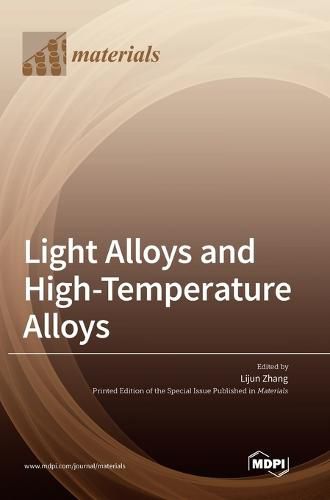Readings Newsletter
Become a Readings Member to make your shopping experience even easier.
Sign in or sign up for free!
You’re not far away from qualifying for FREE standard shipping within Australia
You’ve qualified for FREE standard shipping within Australia
The cart is loading…






This title is printed to order. This book may have been self-published. If so, we cannot guarantee the quality of the content. In the main most books will have gone through the editing process however some may not. We therefore suggest that you be aware of this before ordering this book. If in doubt check either the author or publisher’s details as we are unable to accept any returns unless they are faulty. Please contact us if you have any questions.
Light alloys and high-temperature alloys are widely used as key engineering materials in both the civil and military industries due to their excellent comprehensive properties and performance. Over recent decades, huge amounts of theoretical and/or experimental efforts have been devoted to this field and great achievements have been made. In this book, entitled "Light Alloys and High-Temperature Alloys", there are 14 research papers contributed by 85 authors at 27 universities/institutes/companies from 9 countries, including China, the USA, the UK, Germany, Spain, Australia, Ukraine, Poland, and Romania. The topics cover different types of light alloys, including Al-, Mg-, and Ti-based ones (also Ti-based metal matrix composites), and high-temperature alloys, including Ni-, Fe-, Nb-, and Ta-based ones. Two new types of alloys, i.e., complex concentrated alloys (CCAs) and phase change materials, are also included. Moreover, in this book, a variety of multi-scale theoretical methods, ranging from first-principles calculations, first-principles molecular dynamic simulations, and Calculation of Phase Diagram (CALPHAD) modeling to crystal plasticity finite element simulations coupled with knowledge graph, as well as experimental techniques, e.g., casting, powder metallurgy, additive manufacturing, etc. are discussed. Consequently, the diverse topics and state-of-the-art theoretical/experimental techniques will attract broad interest from materials researchers worldwide.
$9.00 standard shipping within Australia
FREE standard shipping within Australia for orders over $100.00
Express & International shipping calculated at checkout
This title is printed to order. This book may have been self-published. If so, we cannot guarantee the quality of the content. In the main most books will have gone through the editing process however some may not. We therefore suggest that you be aware of this before ordering this book. If in doubt check either the author or publisher’s details as we are unable to accept any returns unless they are faulty. Please contact us if you have any questions.
Light alloys and high-temperature alloys are widely used as key engineering materials in both the civil and military industries due to their excellent comprehensive properties and performance. Over recent decades, huge amounts of theoretical and/or experimental efforts have been devoted to this field and great achievements have been made. In this book, entitled "Light Alloys and High-Temperature Alloys", there are 14 research papers contributed by 85 authors at 27 universities/institutes/companies from 9 countries, including China, the USA, the UK, Germany, Spain, Australia, Ukraine, Poland, and Romania. The topics cover different types of light alloys, including Al-, Mg-, and Ti-based ones (also Ti-based metal matrix composites), and high-temperature alloys, including Ni-, Fe-, Nb-, and Ta-based ones. Two new types of alloys, i.e., complex concentrated alloys (CCAs) and phase change materials, are also included. Moreover, in this book, a variety of multi-scale theoretical methods, ranging from first-principles calculations, first-principles molecular dynamic simulations, and Calculation of Phase Diagram (CALPHAD) modeling to crystal plasticity finite element simulations coupled with knowledge graph, as well as experimental techniques, e.g., casting, powder metallurgy, additive manufacturing, etc. are discussed. Consequently, the diverse topics and state-of-the-art theoretical/experimental techniques will attract broad interest from materials researchers worldwide.